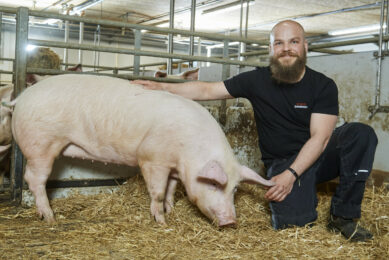Farm visit: Major revamp of grower facility with genetics switch
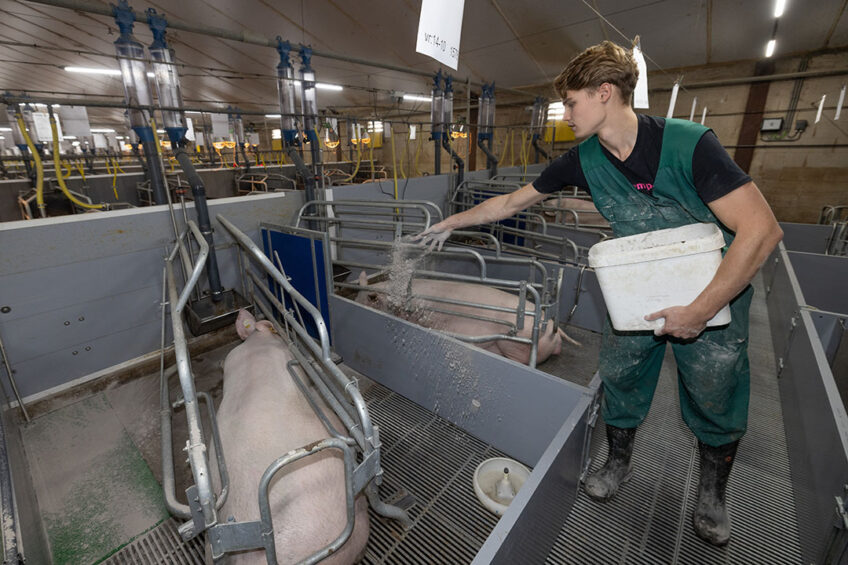
Sjoerd Derksen is an ambitious young farmer in the Netherlands who started producing grower pigs in a facility that received a substantial facelift in 2021. He invested in Danish genetics for optimal growth and performance. The first results look encouraging.
Do not first gain experience elsewhere, but immediately lead the troops. That, in short, is the story of Sjoerd Derksen. Since mid-2021, this 20 year old has been running a breeding farm with 1,800 sows and piglet rearing. Since he was 13 years old, Derksen has known that he wants to work with sows and still fully supports his choice to run this farm: “I like the freedom of this profession, and I think it is nice when everything runs smoothly and the pigs stay healthy. The goal is to produce many piglets at low cost.”
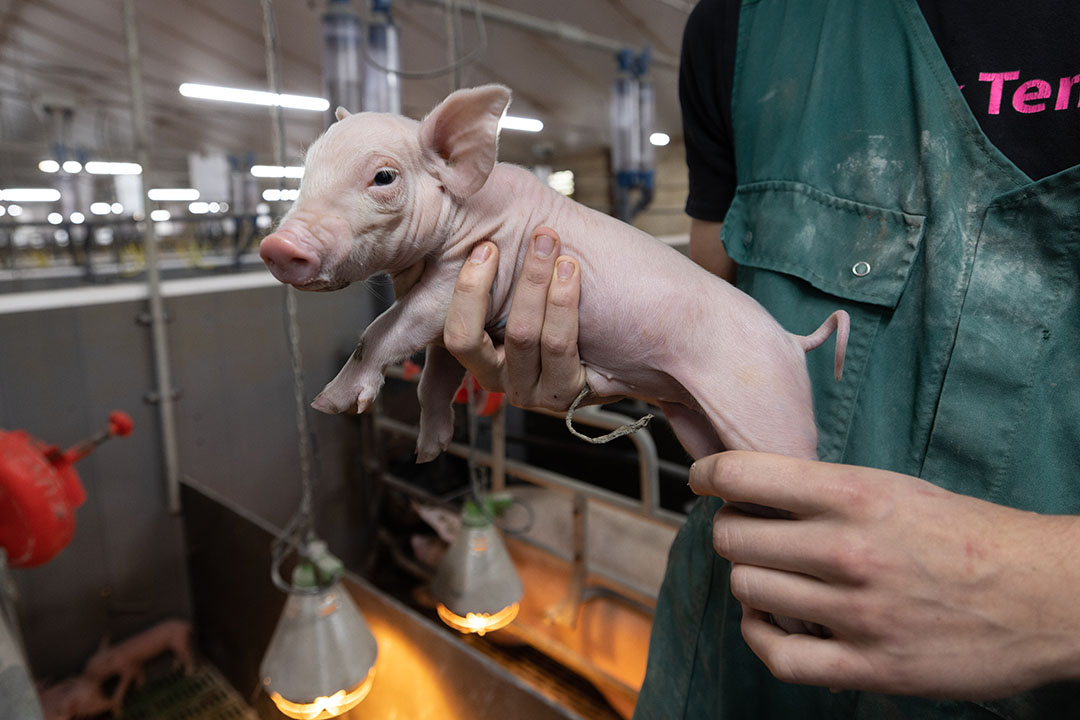
Extensive renovations
Early in 2021, the farm site was bought by Derksen’s father, also a pig producer, and since then it has undergone extensive renovations. The farrowing house and 2 sow houses are one area now, creating a wide space. The ceilings have been removed, and interior walls have been removed as much as possible. In this way, spacious departments with many animals have been created.
Since then, all animal groups have switched to dry feed. Derksen says: “Dry feed is more efficient to operate for our staff. It is less susceptible to interference than liquid feed. We are fans of large spaces and affordable construction. That is all applied here.”
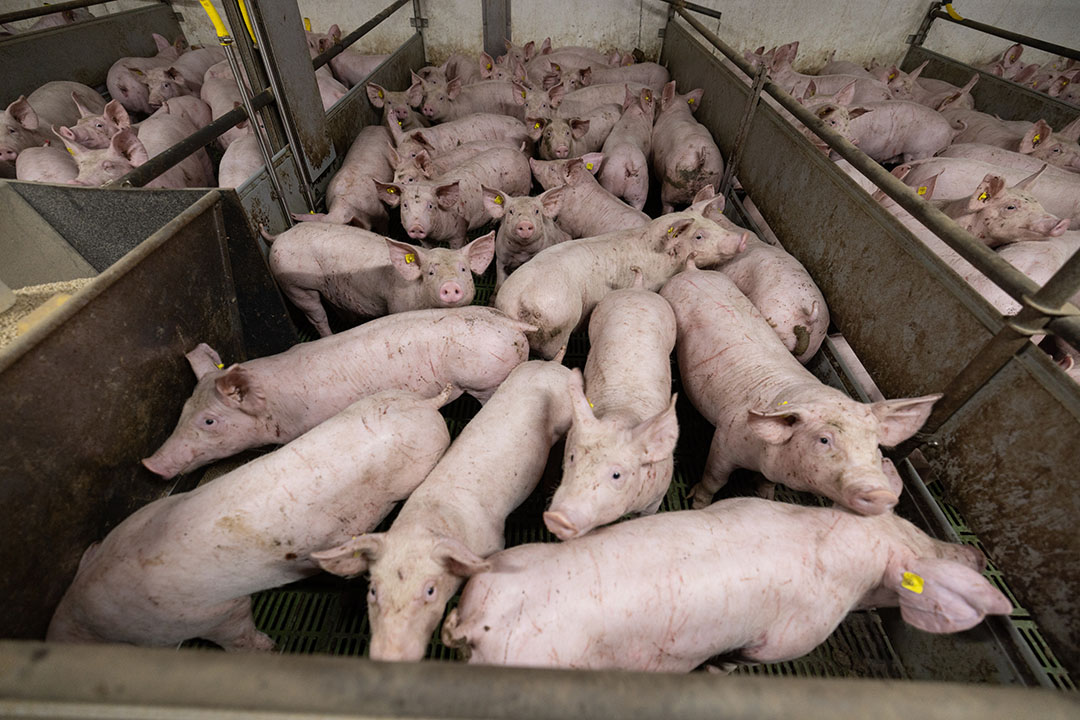
The first piglets were born last January, and the farm has been running smoothly from the start. The sows wean 35 piglets each year. The number of piglets sold is on average 33.5 per sow. That number still needs increasing, because Derksen thinks the current 3.5% mortality rate in the piglet barn is too high. He is aiming for it to be below 3%.
High health status
In the set-up with spacious departments, the outgoing air from the farrowing pen now passes through the gestating sow house and is extracted from there to the air scrubber, without an air duct being needed. In veterinary terms, that is not a problem, as the farm has been working with Danish SPF sows from breeding company Danish Genetics since the restart. The animals are free from Mycoplasma hyopneumoniae (M. hyo), Actinobacillus pleuropneumoniae (App) and Porcine Reproductive and Respiratory Syndrome (PRRS) virus.
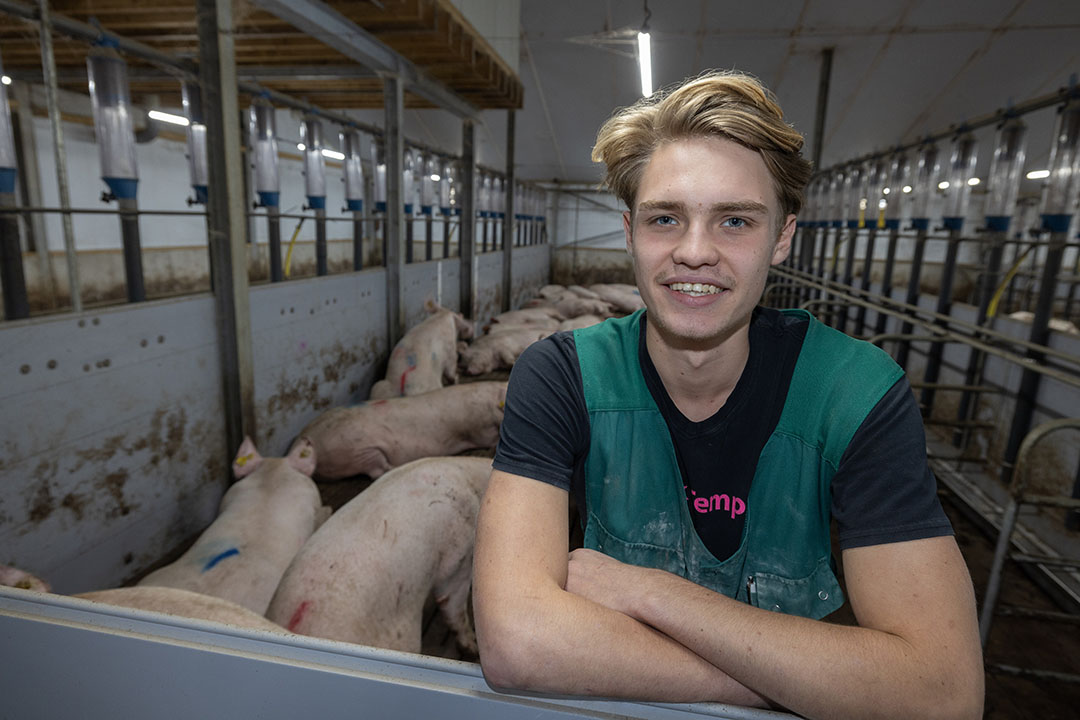
The higher health status also partly explains why the farm is doing well without any other technical support. During lactation, for example, the piglets do not receive any milk substitute, but only pre-starters.
Keeping work limited and clear
The daily work is done by 4 foreign employees, who work efficiently with the piglets. Nevertheless, the entire operational management is aimed at keeping the work as limited and clear as possible, with minimal risk of errors.
That is also reflected in the sow barn, where the animals lie in groups of 24 sows, selected on condition. Derksen says: “This works efficiently and easily. Feeding occurs twice a day. If a sow stays down, it is immediately clear that she is not well.” It is clear that growing piglets does not get much easier than on this farm.
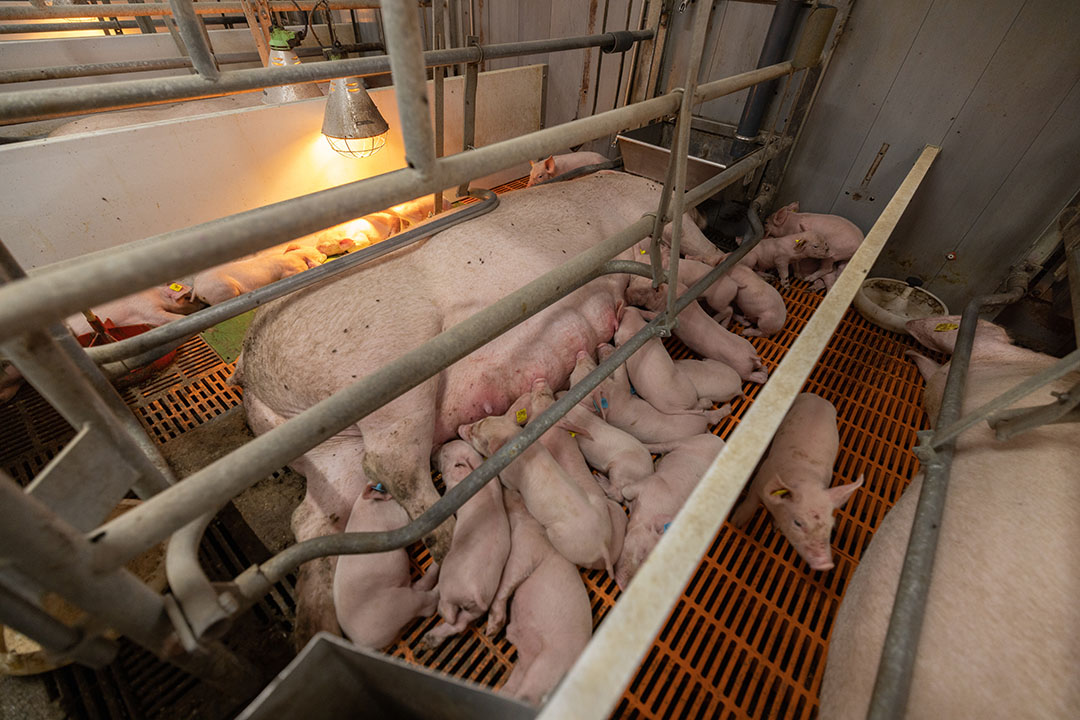
Care and management
Gilts receive 2.9 kg of feed during their entire gestation. For sows, the regime is different. During the first 5 weeks of gestation, the sows are fed 3.5 kg of feed daily. After that, feed amounts drop to 3 kg, until they are moved into the farrowing house. Only one time did the feed allocation need to be increased, by 0.2 kg, as the sows’ backfat thickness was insufficient. That is now a thing of the past. The animals look great, with no ulcers on their shoulders. The litters are beautiful; the piglets vital. That is the proof that the animals are receiving the right care.
The sows are expected to raise 16 piglets. Surplus piglets are placed with a foster sow. Every week the team appoints six to seven foster sows. Derksen transfers the piglets himself and makes litters with smaller, medium and heavy piglets.
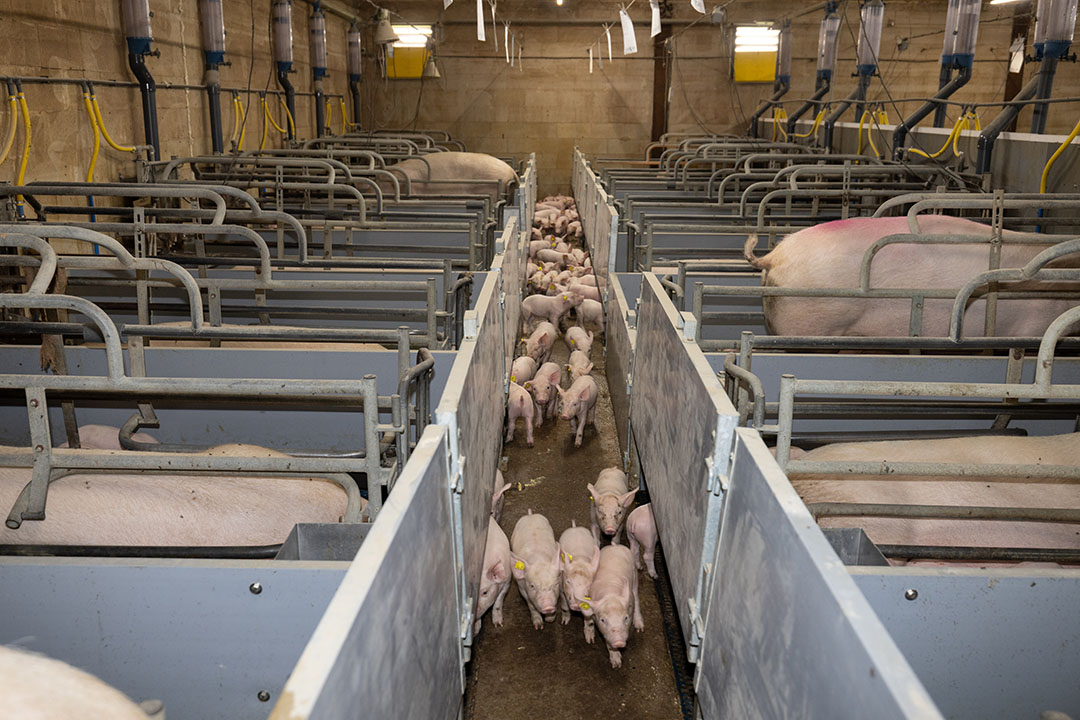
Vaccinations
When the piglets are 4 days old, they receive the necessary treatments, including an iron injection. Before weaning, they get another vaccination against Porcine Circovirus, type 2 (PCV2). That is the only shot for the SPF piglets; they enter the transport truck without protection against PRRS virus or M. hyo.
Once the piglets are 1 week old, the pen partition at the rear of the farrowing pen is removed. The control corridor then fills up with piglets that can drink anywhere. Only the litters with the lighter piglets remain in the farrowing pen, with their own mother.
Temperature
The newborn piglets stay warm on 80 watt electric piglet nests. Furthermore, there is no heat source in the farrowing pen. Lime is sprinkled in the pens before farrowing. This disinfects and ensures that the piglets dry up faster after birth. The pig producer’s experience is that the room temperature in the farrowing pen does not drop below 22°C. Temperature control is regulated via valves in the side wall. The heating and ventilation part is modest, yet effective.
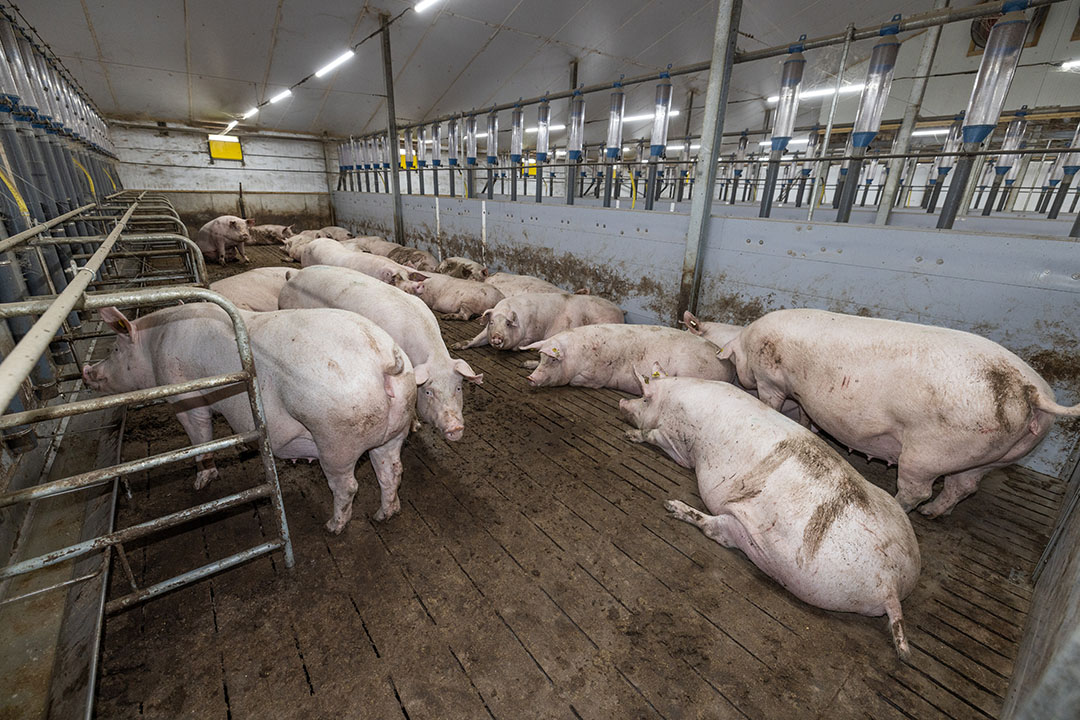
Sales market and goals
Piglets are transferred to a grower section at 23–24 days of age, where all precautions are taken to limit the effects of a weaning dip. For a week, the piglets receive liquid feed of pre-starter mixed with creep feed twice a day, in addition to the dry feed from the feeder. There is also a bowl with water – all measures are taken to make it as attractive and accessible as possible for the animals to take in feed and water. One week after weaning, a switch is made to piglet starter feeds.
As soon as the piglets have recovered from the weaning dip, they develop well and grow like weeds. If all goes to plan, the weaners leave the farm when they are 70 days old, weighing on average 24 kg. The heaviest piglets observed during the visit were a few days older and already weighed about 27 kg.
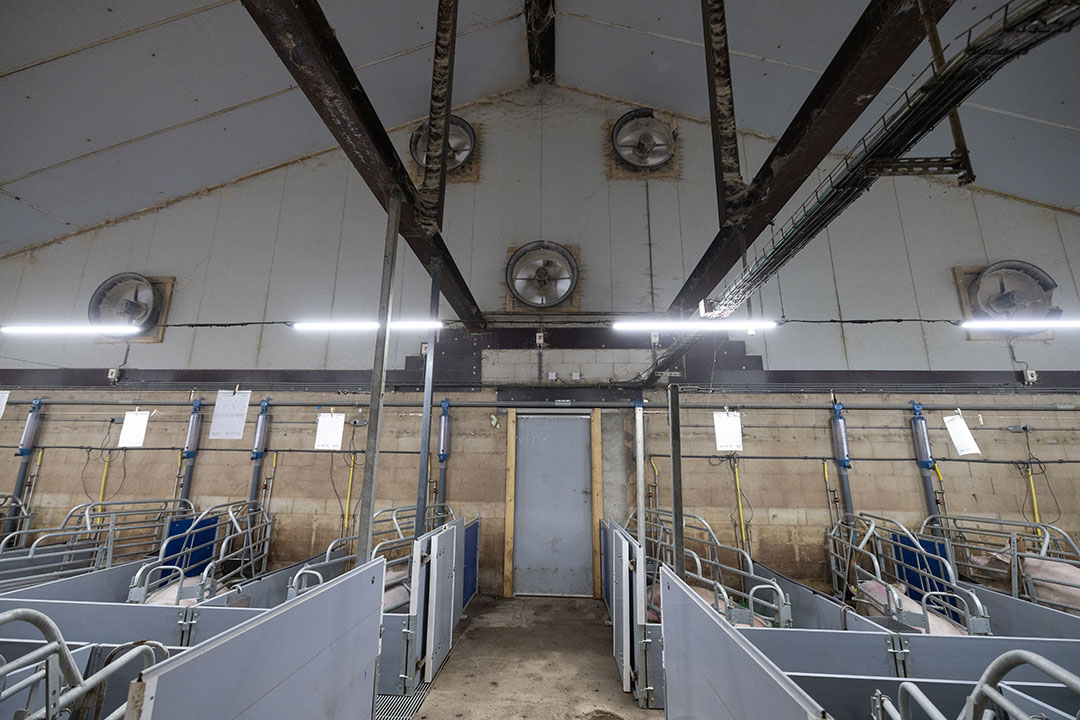
Duroc pig genetics
In the beginning, the sows were inseminated with semen from a different type of terminal boar. Since October 2022, however, the first Danish Durocs have been born. Derksen’s piglets are often exported to Spain and sometimes to Germany. He says, “We are now switching to Durocs because the market is slightly better for it, we think. These genetics in combination with higher health are sought after abroad. High growth and low feed conversion: it is worth money.”
Taking over the farm
In time, the young pig farmer may want to take over the company. He is now participating in quarterly meetings when comparisons are made between figures from the farm he manages with other (foreign) operations owned by his father. Actually taking over the farm, however, is far from being discussed. For the short term, Derksen’s aim is to further finetune the details. The most important point for improvement is to further limit the weaning dip.






